Taking a stroll down Innovation Road: the 10 best hi-fi and home cinema products we saw at Yamaha's museum
The best finds from Yamaha's archives
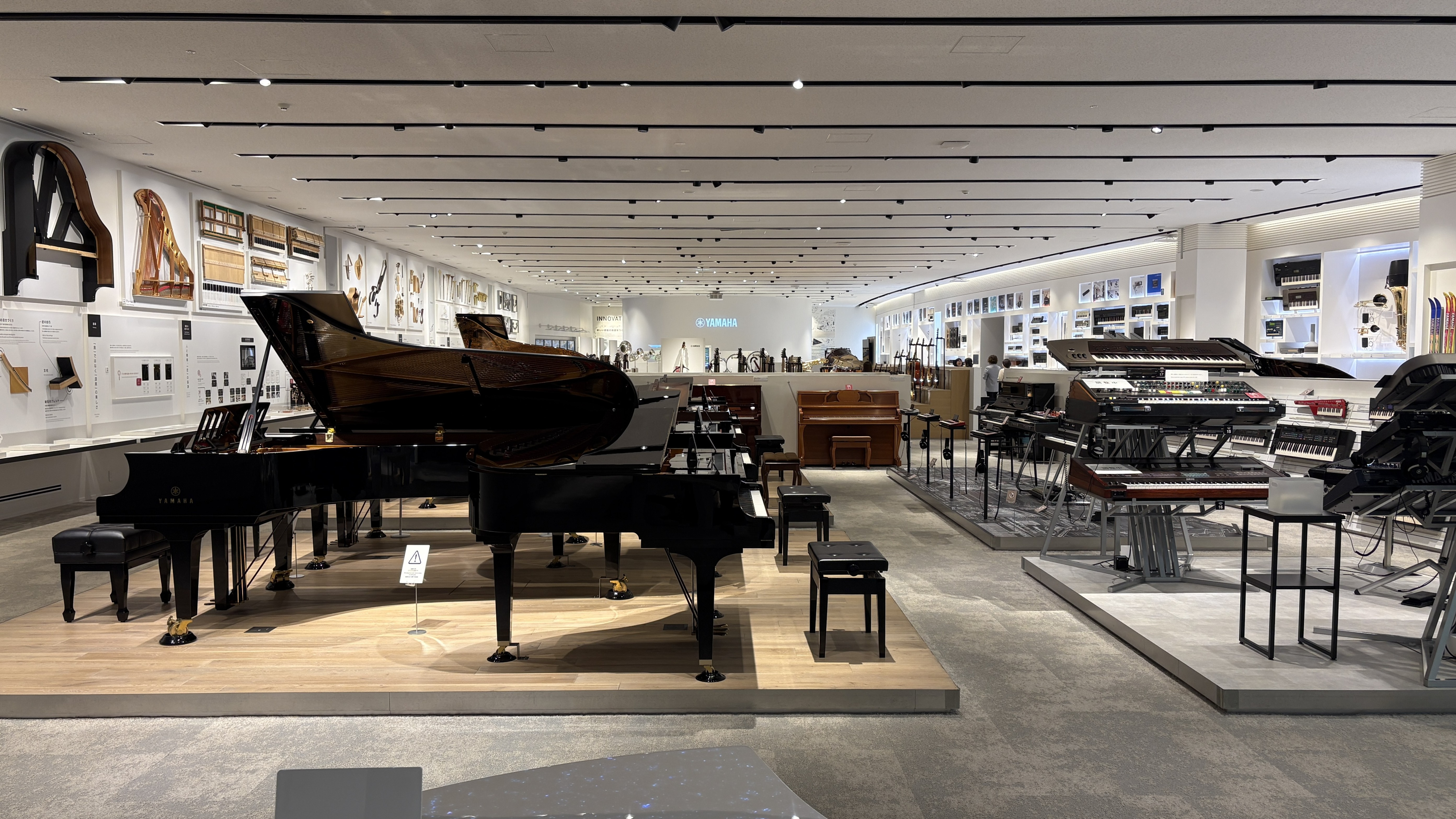
"Hamamatsu is known as the city of music," Yamaha tells us of the coastal city it calls home. Sitting slap-bang between Tokyo and Osaka, it is indeed the base of a handful of legendary audio and musical instrument brands, including Roland and Kawai.
And if its music reputation alone doesn't make it a suitable base for an audio brand as strong as Yamaha, Hamamatsu is also renowned for its motorcycle industry!
Yamaha's founder, Torakusu Yamaha, established the company there back in 1887, intending to produce pianos and reed organs. Of course, Yamaha is today a brand with an unquestionably rich and diverse product catalogue and history, which made our visit to its headquarters last week an extremely interesting one.
We toured its instrument manufacturing plants, spent time in its hi-fi listening room, and heard a range of its existing (and some secret upcoming) products within its vast hi-fi and home cinema ranges.
While those aspects focused on the present and future of Yamaha, we were also lucky enough to discover the company's past by visiting its Innovation Road museum, which houses everything from grand pianos to decades-old hi-fi and even Yamaha-branded bathtubs, ski boots and archery equipment.
It was a perfect opportunity to look back at some of the key products that shaped the hi-fi and AV powerhouse we know it as today.
It was a tricky task, such was the scale of the museum, but we picked 10 of our favourite classic products from Yamaha's back catalogue: five classic hi-fi and five notable AV products from the last 50 years that caught our attention during the museum tour...
Get the What Hi-Fi? Newsletter
The latest hi-fi, home cinema and tech news, reviews, buying advice and deals, direct to your inbox.
1. Yamaha NS-1000 (1974)
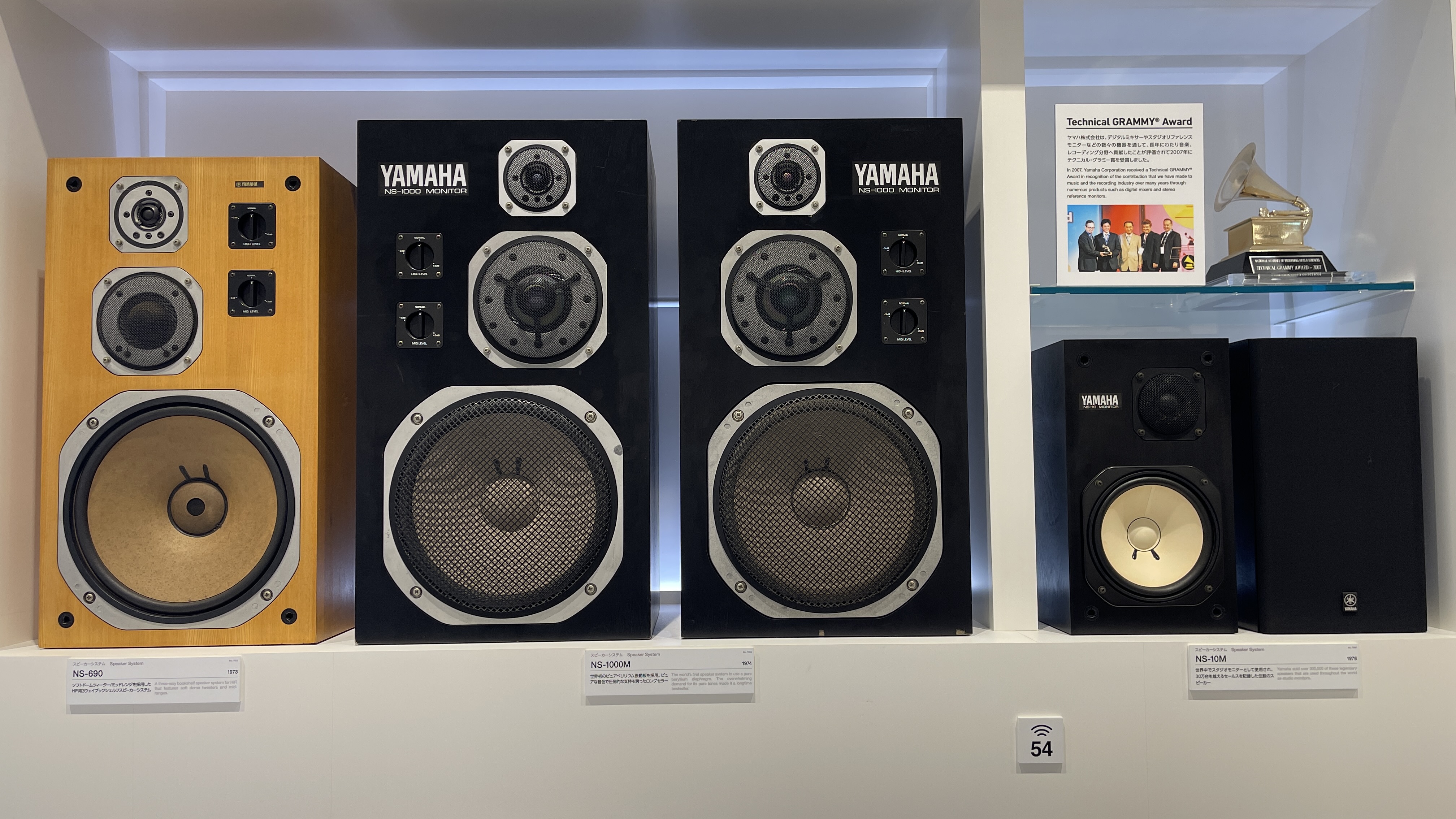
The NS-1000M’s claim to fame is that they are the first speakers to use pure Beryllium for their driver diaphragms. Considering the use of this material is considered exotic even today, we can only imagine how impressive it must have seemed in the mid-’70s.
Here, Yamaha specifies it for both the 30mm dome tweeter and 88mm midrange, while opting for paper in the 30cm bass unit. It’s all wrapped in a chunky, impressively sturdy cabinet around 70cm tall.
Read the marketing spiel of the day, and it’s amusing to find that the company refers to this monster of a standmounter as a ‘bookshelf’ design. We would like to see a bookshelf that could properly support such a speaker!
The NS-1000M were designed as studio monitors, so it is no surprise that they have a highly analytical sound and are as fussy about partnering electronics as they are about recording quality.
Their sound was taut, punchy and powerful, delivering an impressive level of insight for their time. Stereo imaging was of a high standard too. These hefty monitors are considered something of a cult classic these days, and rightly so.
2. Yamaha AVX-2000 DSP (1990)
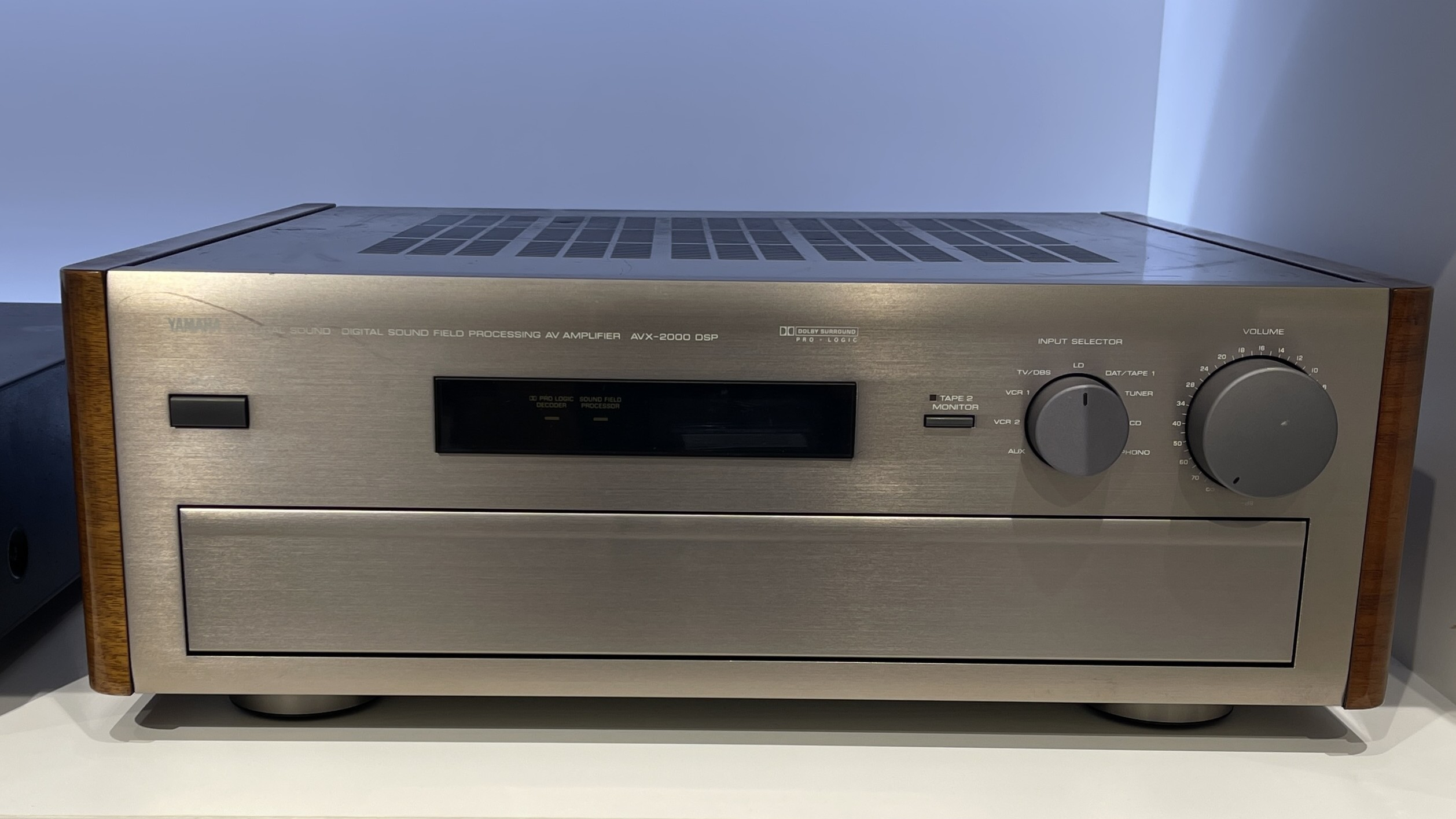
The Yamaha AVX-S2000 DSP was ahead of its time and brimming with class. Just from taking a glance at its suave exterior (just look at those wooden side panels!), it is clear this is truly a special piece of AV equipment from Yamaha's archive.
This seven-channel power amplifier could deliver ample power to 7.1 surround sound speaker systems, emphasising an "as the director intended" approach to cinematic audio that we still seek out 35 years later.
Furthermore, it featured Yamaha's proprietary digital sound processing system, which encompassed a whopping 23 different modes in total: eight home cinema modes and 15 hi-fi modes.
Notably, this included the CENE-DSP sound mode, a revolutionary step forward in creating immersive sound at home. Nowadays, we take this sound processing feature for granted, as Dolby Atmos is a widespread feature, and other manufacturers include their own immersive sound processing modes on many of their AV amplifiers (take the Sound Field mode on Sony's TA-AN1000, for example).
For those DSP modes alone, we have a lot to thank the AVX-S2000 DSP for, as it unquestionably helped to shape the AVRs we know and love today.
3. Yamaha B-6 power amplifier (1980)
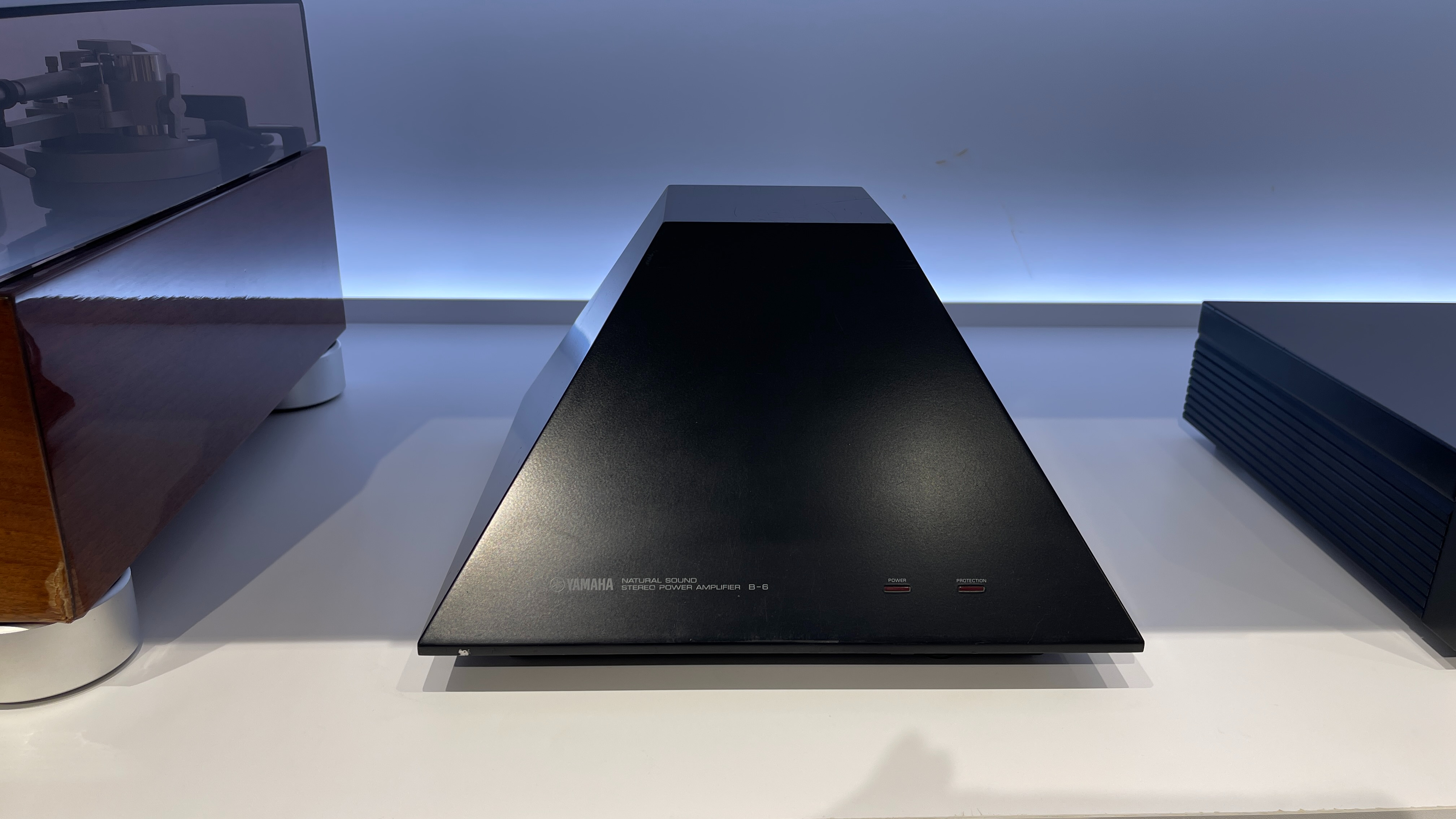
Our first reaction upon seeing the B-6 stereo power amplifier was confusion. Looking at it from the front, we couldn’t tell what it was.
Indeed, there is little in the world of hi-fi that looks anything like it. Get beyond the striking visuals, and you will find more here than just the unusual appearance.
It turns out that this small pyramid-shaped amplifier was something of an object lesson on how to get a lot of power out of a small box. It could deliver a claimed 200 watts per channel into an 8 ohm load while producing low levels of distortion and heat. This is partially thanks to a clever switching power supply circuit Yamaha simply called 'X-Power'.
That unusually shaped casing is made of cast aluminium and vented at the back to help with heat management. Oddly, the company never made a suitably styled partnering preamp, which is a shame.
4. Yamaha DPX-1 (2000)
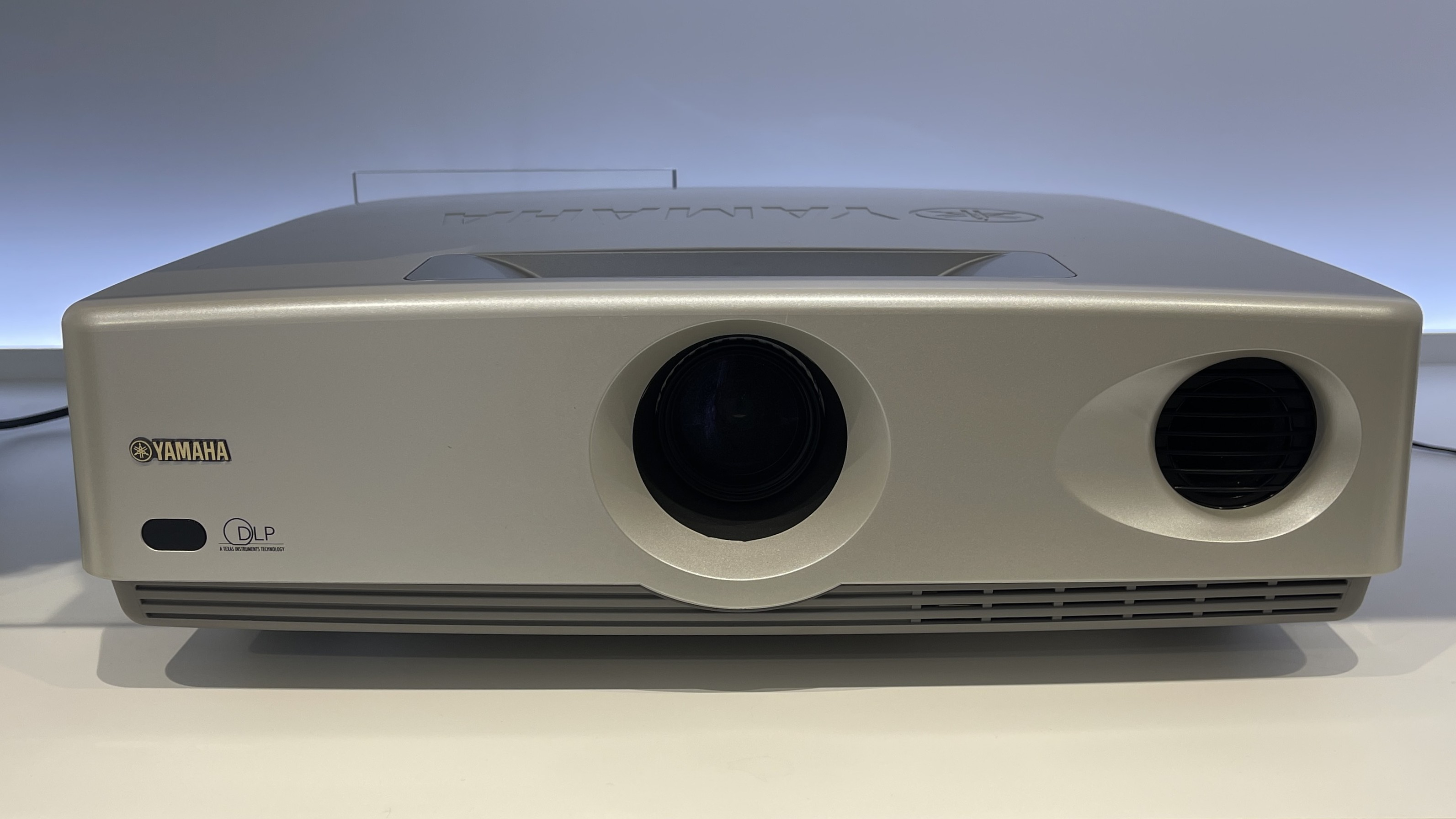
"Yamaha makes a projector?" may sound like a redundant question in a museum also featuring bathtubs, archery equipment and tennis rackets made by the same company, but it still came as a surprise to see Yamaha's first projector in the flesh.
In fact, the DPX-1 was the first in a short-lived series of Yamaha projectors, which seemed to tail off in the mid-2000s. It's a shame the company isn't still in the projector game, especially after the news that Sony is having to withdraw its stellar models from the European market.
According to Yamaha, the DPX-1 features "a rich array of tonal variation" and, impressively, a "noiseless design". Projector fan noise is a pesky yet unavoidable issue that has been the undoing of a handful of models in our AV testing room, and while we didn't get to verify that this projector is truly "noiseless", its great to see that Yamaha was looking for solutions to this issue two and a half decades ago.
5. Yamaha TC-800GL (1976)
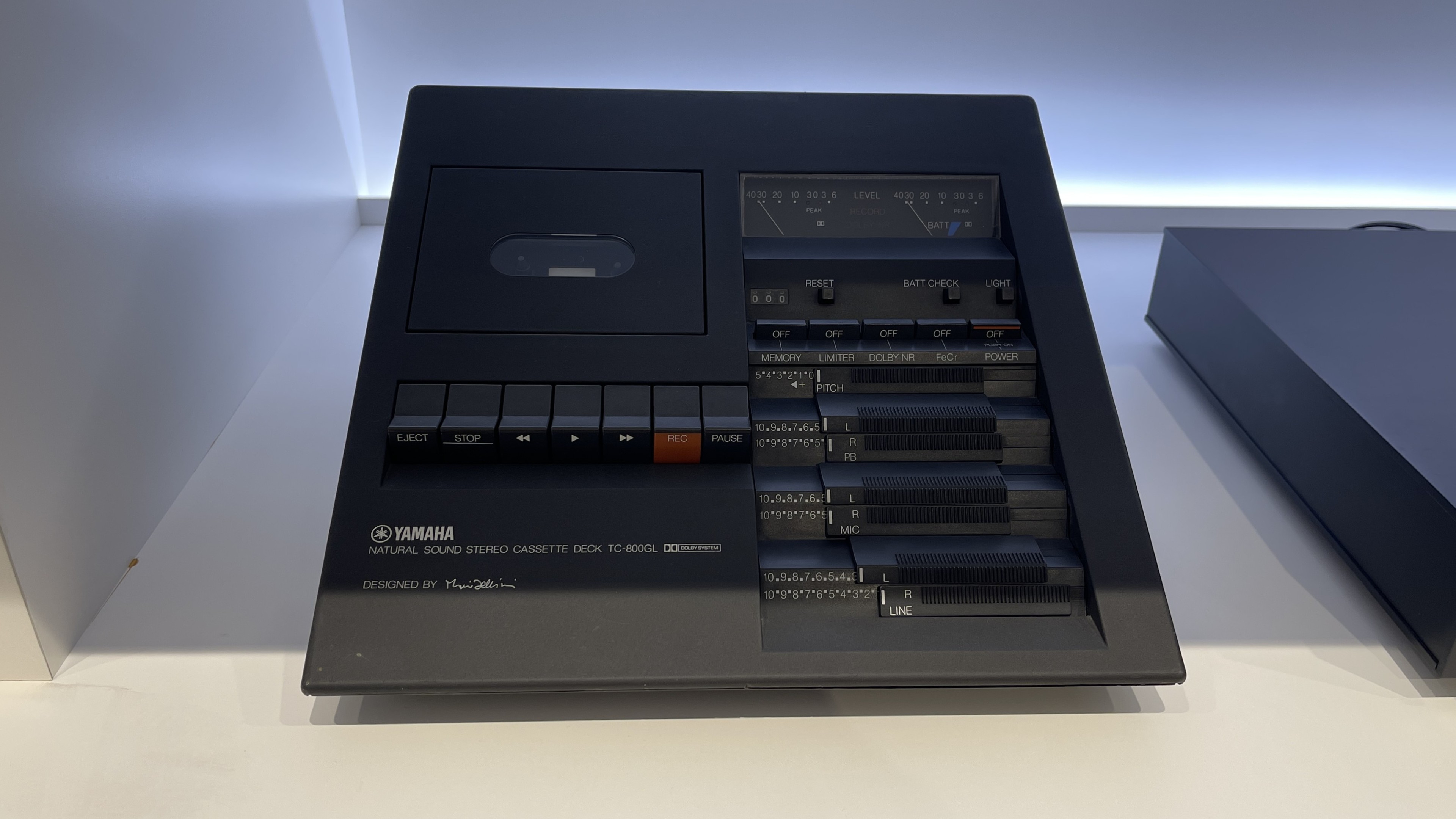
There aren’t many pieces of hi-fi that make it into the New York Museum of Modern Art’s permanent collection, but Yamaha’s TC-800 GL cassette deck is one of the fortunate few. It was styled by the renowned Italian industrial designer, Mario Bellini, who is famous for his distinctive buildings and furniture.
The TC-800GL’s sloped shape made quite a statement. This unusual look wasn’t just for appearance’s sake, as it made operating the various controls (and seeing the twin level meters) easier to do, even when the user was standing up.
The technical side wasn’t overlooked either, with the TC-800 GL equipped with Dolby noise reduction (to reduce tape hiss) and a nicely engineered transport mechanism. That distinctive casework was made of plastic coated with Nextel to give it protection and a pleasant texture.
6. Yamaha DVD-C900 (1999)
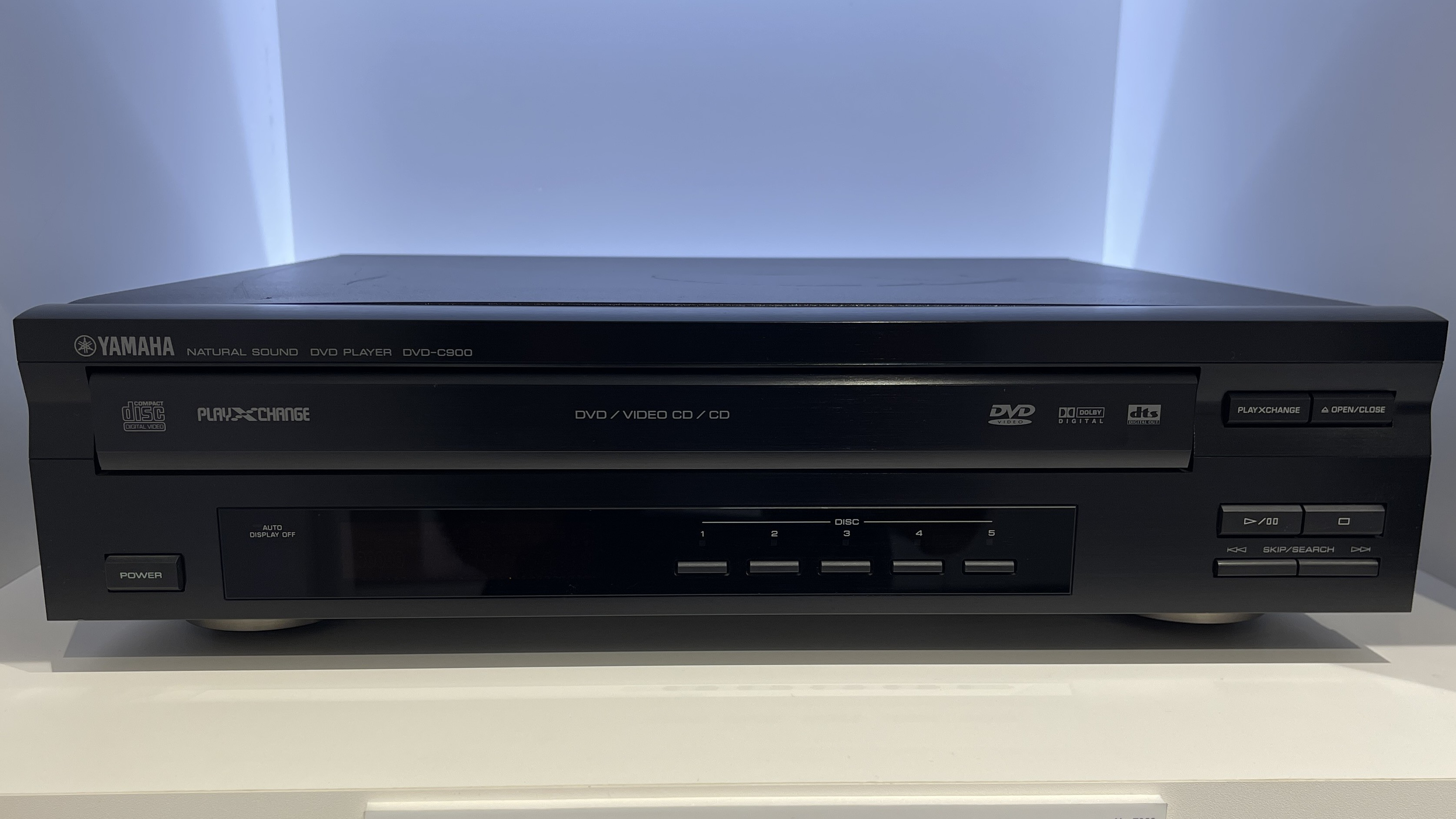
We're familiar with CD changers, capable of storing and swapping between multiple discs to continuously play your favourite albums. In fact, Yamaha brought back the legacy ’80s/’90s design with its CD-C603 in 2023. But imagine that concept for playing your favourite movies.
The DVD-C900 was an AV enthusiast's dream, as it was capable of storing and playing five DVD discs in succession – ideal if you want to binge all of the Monty Python films back-to-back, or just the good Star Wars films.
It was also compatible with video and audio CDs while supporting Dolby and DTS audio formats with a built-in 5.1 channel Dolby Digital recorder, making this a multi-disc player of many talents.
As soon as we laid eyes on the DVD-C900, we began dreaming of a modern 4K Blu-ray equivalent for modern AV set-ups. We're well aware that's a pipe dream... unless Yamaha is open to reviving this concept?
7. Yamaha GT 2000X (1985)
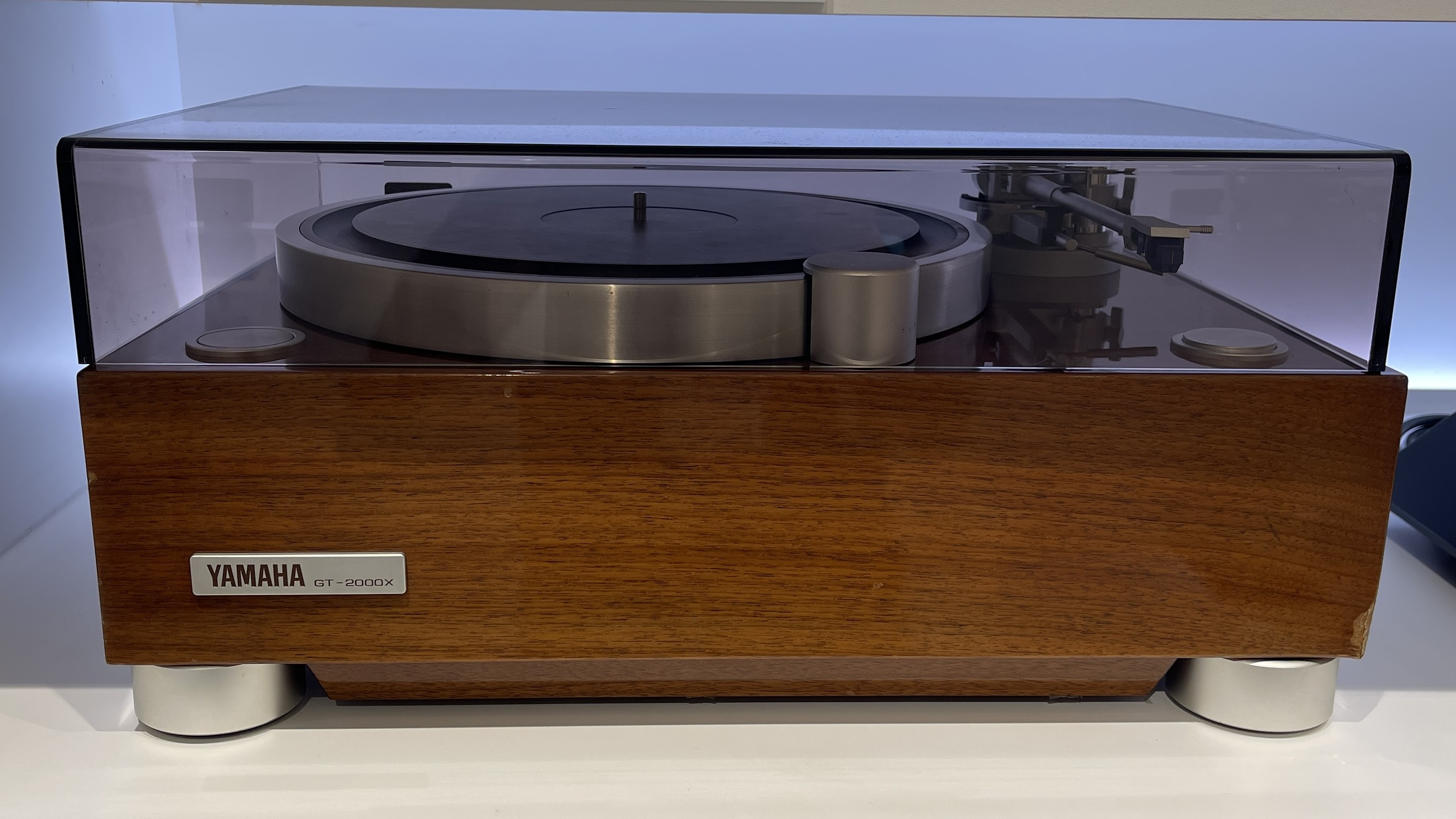
That the initials 'GT' in this turntable’s name stand for ‘Gigantic’ and ‘Tremendous’ tells you pretty much everything you need to know about this limited-edition high-end record player.
The GT 2000X is an imposing design that looks like a scaled-up version of a normal deck, and weighs in at a meaty 34kg. These Yamahas are rare and highly sought after by those who love exotic Japanese direct drive turntables – and we can understand why.
It features a coreless, direct drive motor controlled by a quartz PLL (Phase Lock Loop), so speed stability shouldn’t be an issue, particularly when you consider the inertial effect of a hefty 5.8kg die-cast aluminium platter.
The GT-2000X came equipped with the YSA-1 tonearm, which has a straight arm tube and gimbal-type bearing.
As a treat, the X came as standard with an auto-lifter that takes the stylus off the record at the end of a side. Neat.
8. Yamaha DSP-A1 (1997)
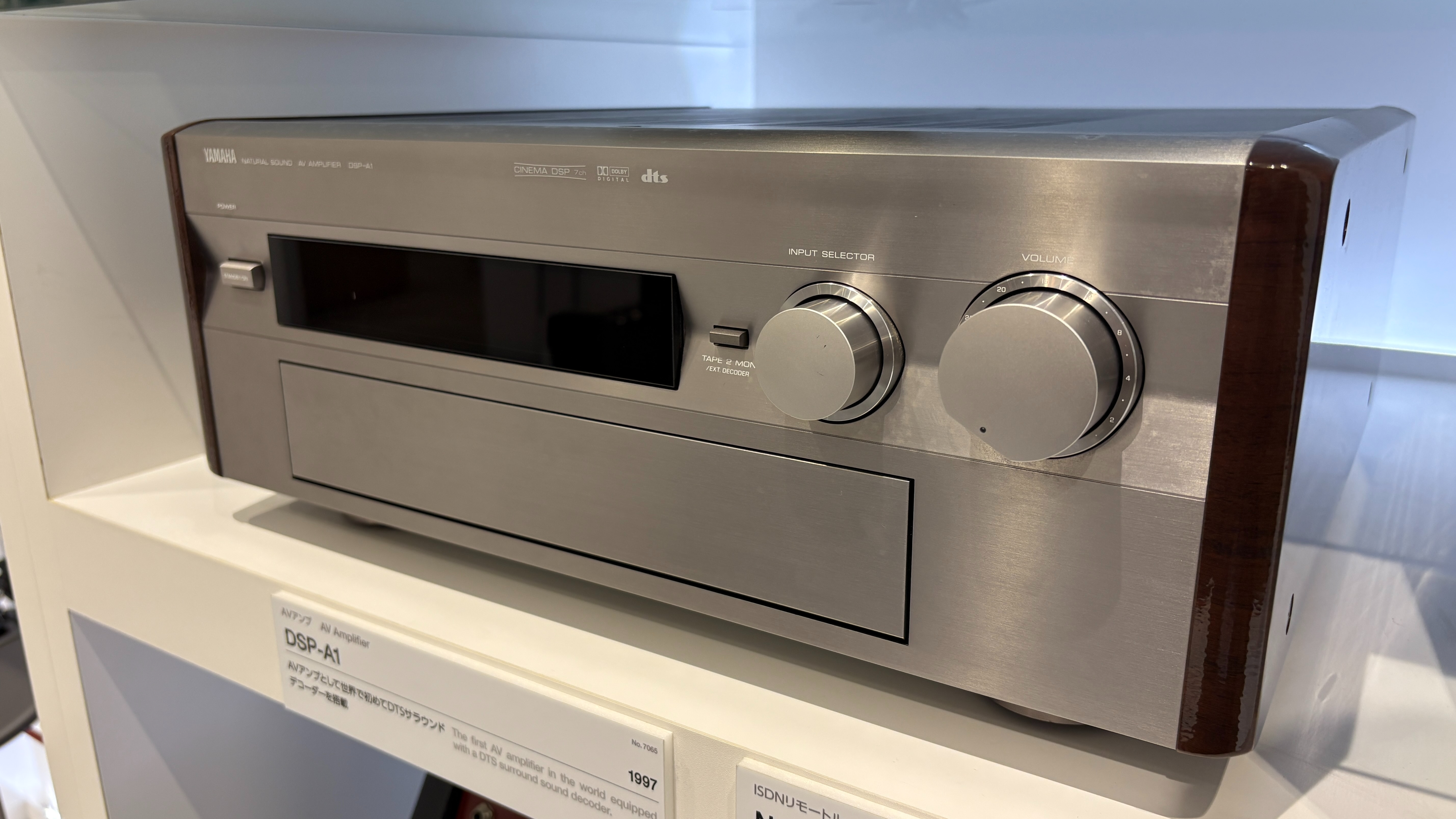
The second revolutionary AV amplifier on show at Yamaha's Innovation Road installation, the DSP-A1 carried forth much of what made the AVX-2000 DSP special, with a few key improvements that helped to cement its legacy.
It continues that eye-catching design (once again, just look at those wooden panels), though you'll notice a new logo emblazoned on the metal front plate.
Indeed, this was the first AV amplifier in the world to feature DTS surround sound support, which is a feature we take for granted, considering any current AVR on the market worth its salt will feature this.
It also carries over the DSP features from the AVX-2000, including the seven-channel immersive sound processing feature, which was renamed 'Cinema DSP'. Sound familiar? That sound mode still exists on the company's current AVR range, including the five-star RX-A6A receiver.
9. Yamaha NS-10M (1978)
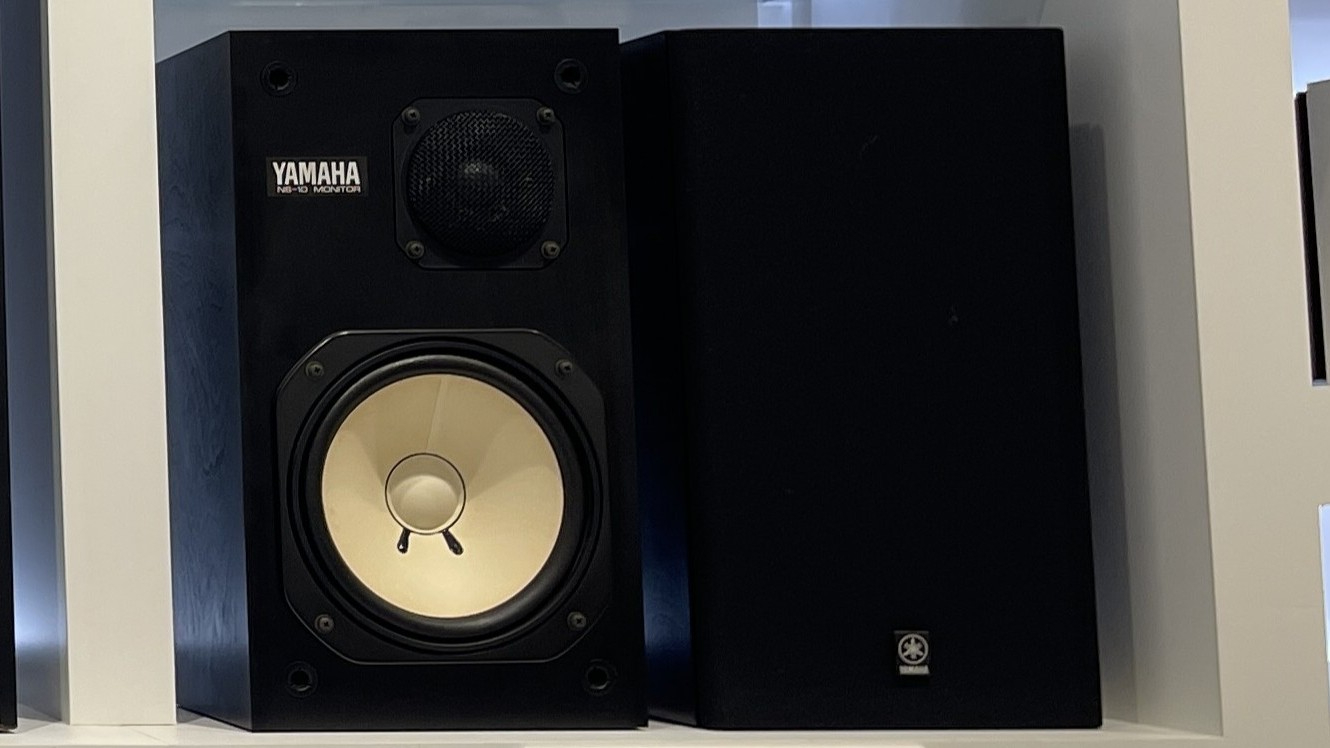
Yamaha’s NS-10 may have started life as a poorly reviewed domestic standmounter, but it went on to become the nearfield monitor of choice in recording studios all around the world.
It was a small, sealed box design and didn’t have much in the way of bass extension or weight. However, it did have an agility and cohesion at low frequencies that ported rivals couldn’t match.
The speaker’s peaky treble performance highlighted flaws in recordings in a way that many studio engineers found useful. It allowed them to mix recordings in a way that worked well on low-fi audio products such as portable transistor radios and in-car units.
Essentially, they assumed that if a mix sounded good on these speakers, it would sound good on anything listeners used.
With Yamaha claiming sales of over 300,000 units over the speaker’s 13-year lifespan, there is no doubt these were a huge success. Given those numbers, we are certain that there are plenty of NS-10M still in service in studios around the world.
10. Yamaha YSP-1 (2004)
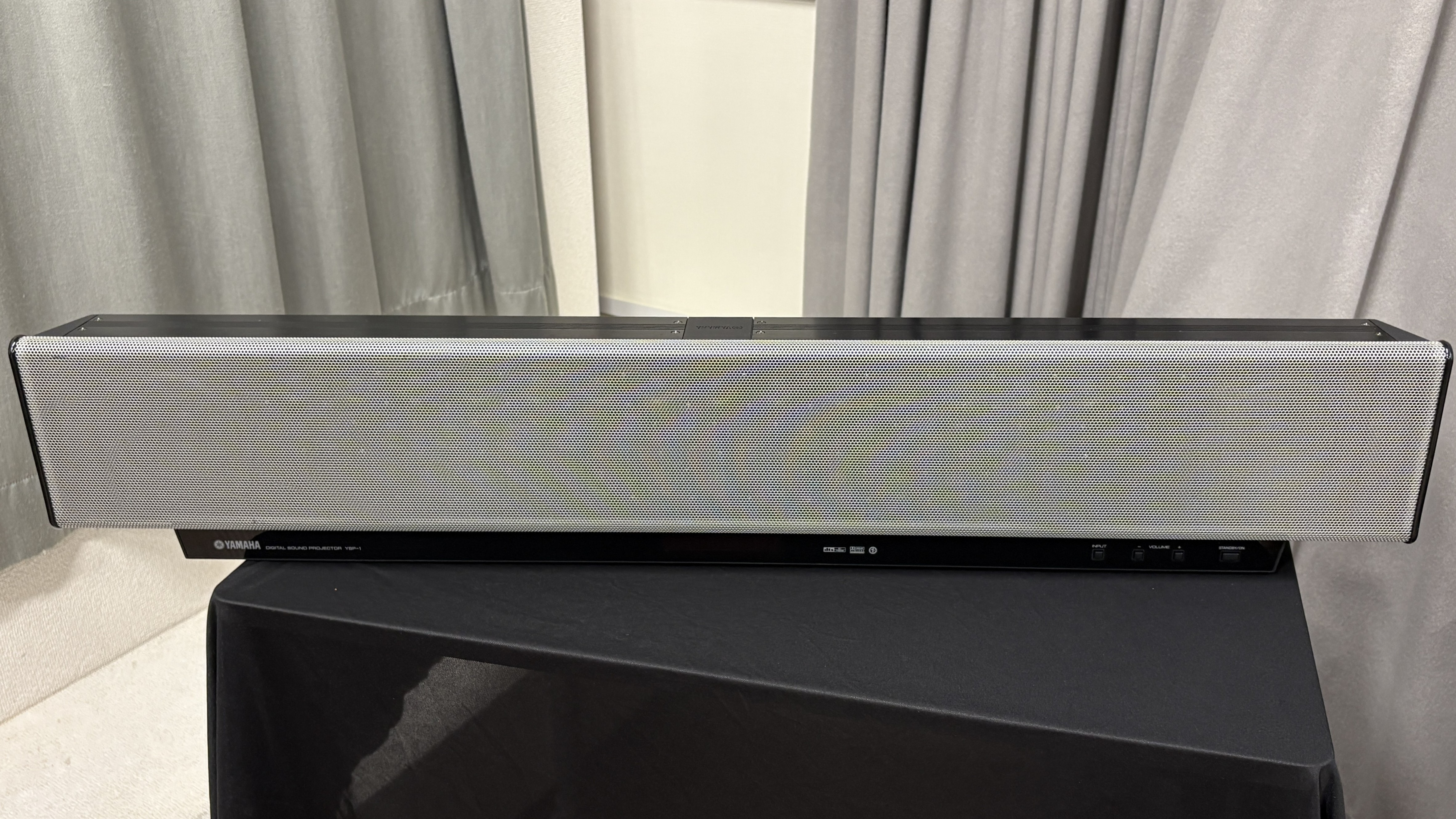
The humble soundbar began life here. The YSP-1 was the first on the scene back in 2004. 21 years later, we're practically drowning in soundbars from nearly every AV and hi-fi company around, though it was Yamaha that conceived the idea – and it did so in pretty spectacular fashion.
Instead of a handful of mid-sized drivers, which is what we tend to see in most modern soundbars, Yamaha crammed a whopping 40 small drivers and dual bass drivers into this digital sound projector, which is what the YSP-1 was known as before the term "soundbar" was adopted.
It featured a total power output of 120 watts: dual 20-watt amplifiers powered the bass units, while each of the remaining drivers made do with two watts each.
Despite this being the first product to line up all of its speaker drivers side-by-side in an (at the time) unusual fashion, Yamaha still managed to take a stab at delivering immersive 5.1 channel surround audio thanks to its extensive history in developing its DSP modes on the above AV amplifiers.
While it certainly wasn't perfect, it was a breakthrough product, earning a very respectable four stars in our now-21-year-old review.
We even complimented its ability to deliver surround sound without the hassle of dotting speakers around the room, though we noted that it would be better with a subwoofer. Soundbars with bundled subwoofers... we wonder if that will ever catch on.
MORE:
Read our Yamaha R-N800A review
Check out our picks for the best stereo amplifiers
As well as our best AV receivers list
Lewis Empson is a Senior Staff Writer on What Hi-Fi?. He was previously Gaming and Digital editor for Cardiff University's 'Quench Magazine', Lewis graduated in 2021 and has since worked on a selection of lifestyle magazines and regional newspapers. Outside of work, he enjoys gaming, gigs and regular cinema trips.
You must confirm your public display name before commenting
Please logout and then login again, you will then be prompted to enter your display name.
